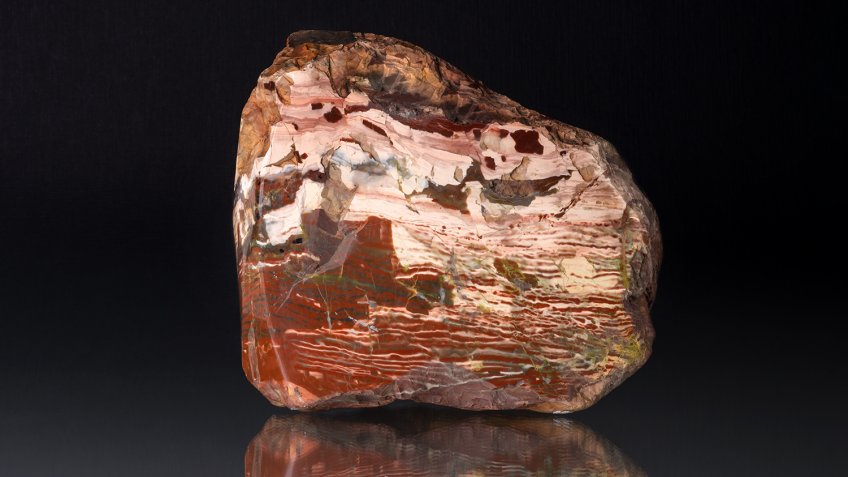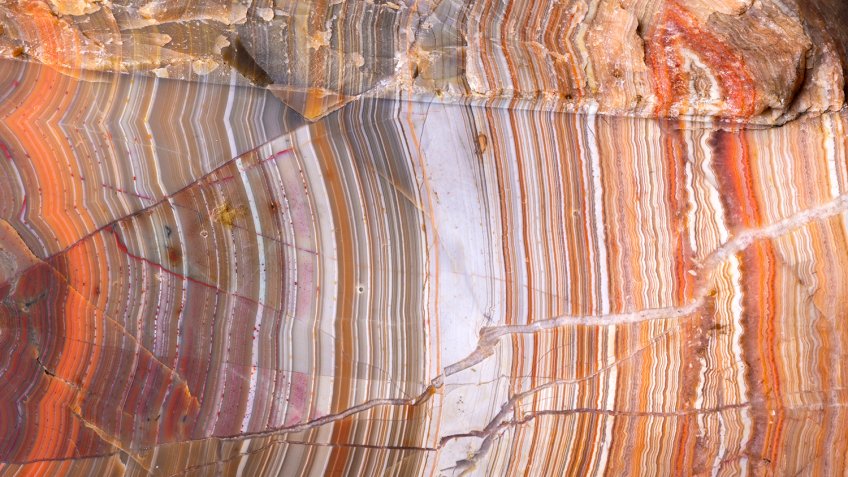
This dull and rather mediocre looking stone does not fade with time but instead keeps getting prettier. Jasper is a mineral that has been mentioned a lot in myths and legends. At all times, people treated it as a sacred stone, and for many centuries only emperors had the right to touch it, let alone have it. No wonder other names of jasper are gem jade or imperial jade.
One real-world example is a decoration made of jasper that serves as a symbol of imperial power in Japan. There is a story that the country’s rulers descend from Ninigi-no-Mikoto (瓊瓊杵尊), an ancient god. And the imperial family keep passing down peculiar hollows through generations, with a jasper necklace being one of them. Japanese believe the jewel is still kept safe somewhere in the sanctuaries of the Tokyo Imperial Palace. However, very few people know how the heirloom looks like. There is no way ordinary people will ever see it. As for rare traditional ceremonies, only a handful of people - a limited inner circle - attend them and are lucky enough to lay their eyes on the jewel. Photo shooting and video recording at these events are absolutely prohibited.
In Russia, jasper is linked to the reigning House of Romanoff. A first ruler who got interested in the gem was Peter the Great. Soon the stone became popular jewellery and ornamental material. And by the middle of the 18th century, jasper interiors of royal palaces had turned into the country's landmark.
Royal family members were continuously enriching the Hermitage collection with lapidary masterpieces. One of the most valuable exhibits is a nineteen-ton vase carved from a solid block of jasper. It took fourteen years for stonecutters to finalise the object. At the same time, even modern carvers become amazed at seeing the artful execution of the vase.
Another Russian national treasure is a variety of jasper that is found in the Ural region only. Orsk jasper is believed to be one of the most beautiful on this planet. It is revered both in and outside of Russia for its original designs and the variety of colours. Items made of Orsk jasper can be found, for example, in the Louvre or British Museum. It was also used to decorate stations of the Moscow Metro stations and the Lenin's Mausoleum.
A particularly unusual application method for jasper was invented by Soviet specialists. They cut Orsk jasper to make special-purpose balls with ground stoppers out of it. Those tools were highly demanded by forensic scientists who used them to store odourprints. In other words, criminalists kept the air they gathered at the crime scenes locked inside of these bowls. It took a while before the smell would escape a vessel, and in the meantime, it could serve as a piece of crime evidence.
Among the ornamental stones, jasper is the top one. The stone is rarely faked because of its abundance. But at the same time, many people are dreaming of jasper jewellery. Though the stone processing is a time-consuming and challenging process, items made of the mineral are resistant to abrasion and only look better with time. The prices on jasper, on the other hand, are relatively low nowadays, if compared to the Lomonosov era. Back then, jasper could cost as much as pearls or amber.





